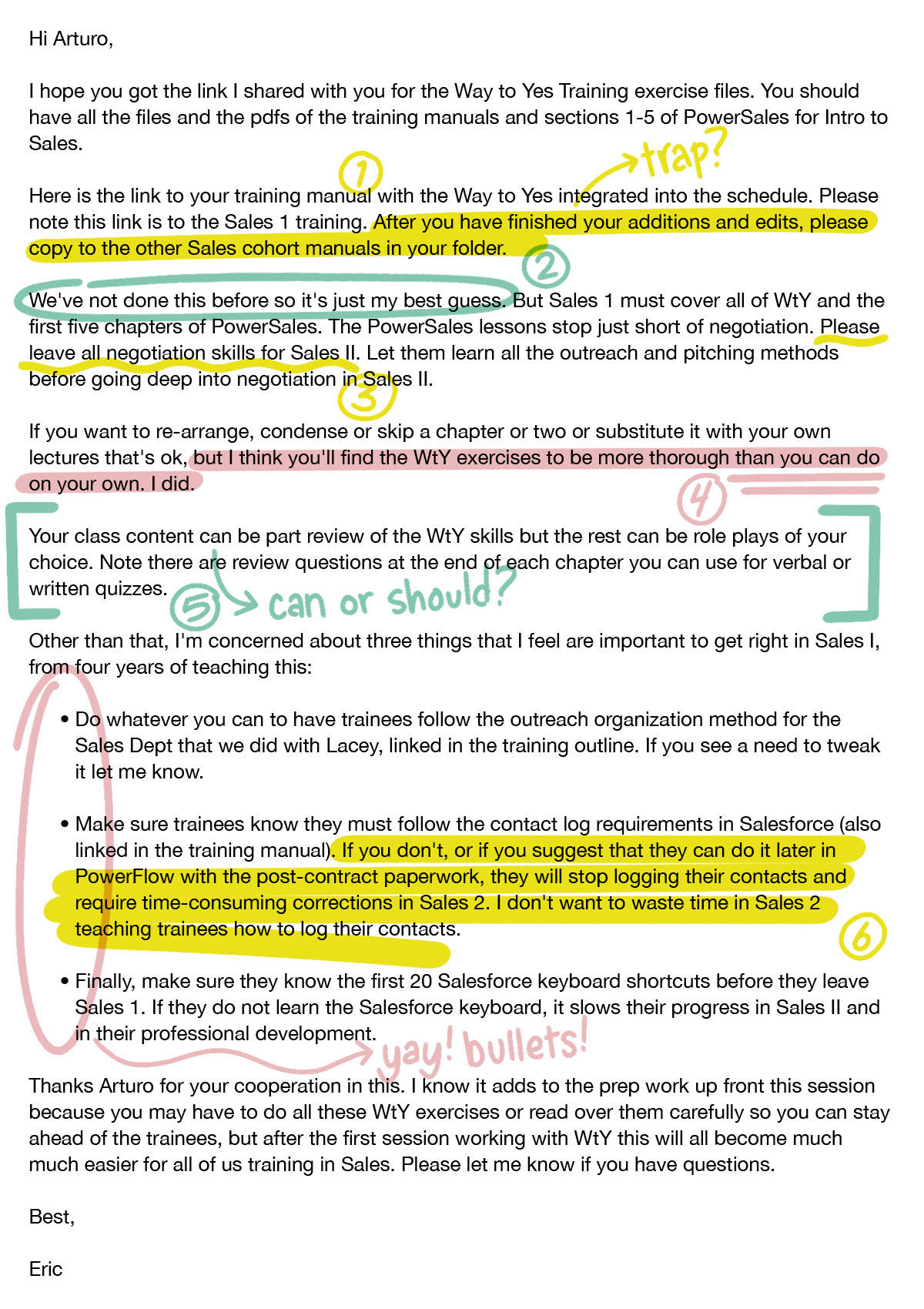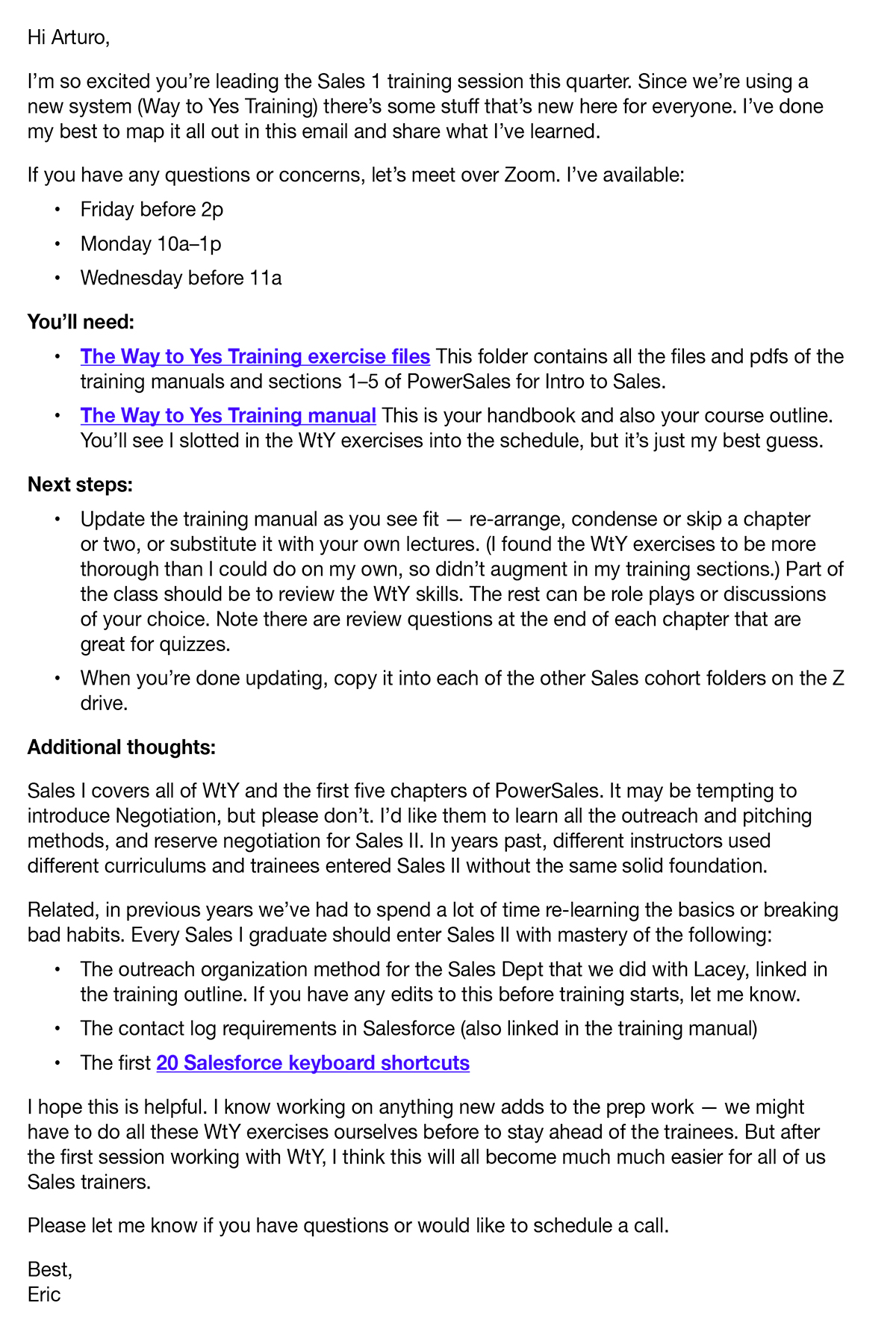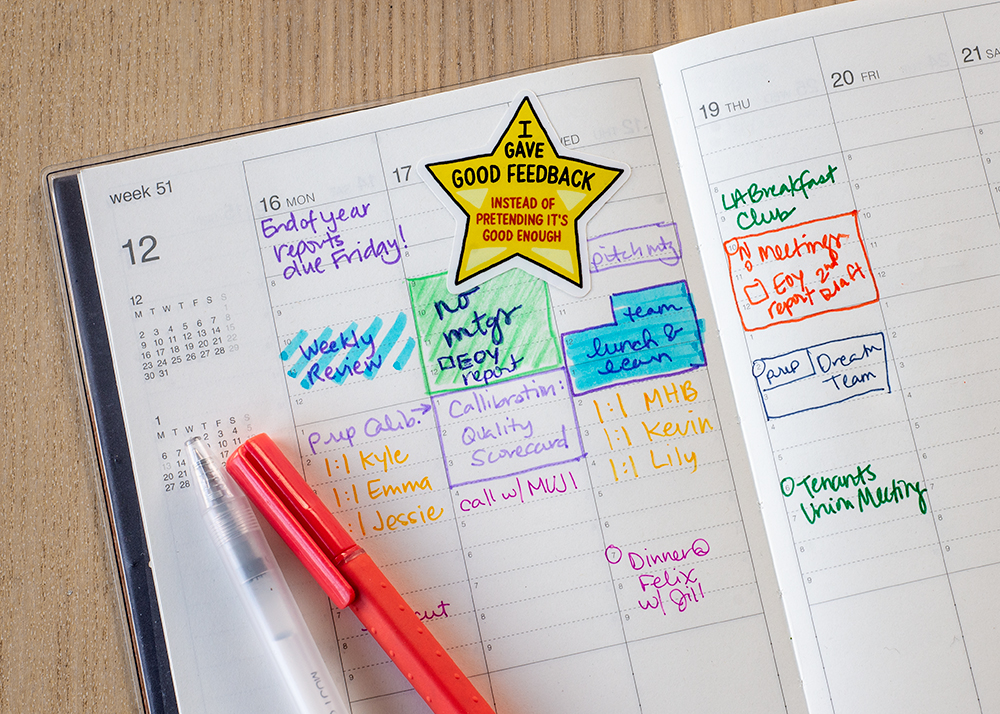Earlier this week, a reader forwarded us an email he’d received with this note: “Got a confusing email. Can you help me figure out what’s going on here?”
Can we ever!
Emma: I love this email because it’s totally innocuous — it reads like 65% of the emails I’ve ever gotten at work. Which is to say: long, surprisingly hard to decipher, and kind of insulting even though I don’t think(?) the sender means to be.
Andy: It’s a common and curious blend for emails: They seem nice, but read rude. There are a lot of instructions, but when you try to do what they say they evaporate into confusion. What’s going on indeed.
Emma: There are two (and half) things that go wrong in this email, which, as I think about it, are pretty much the only things that can go wrong in any well-intentioned email, outside of straight-up lying. They are: organization and tone.
Andy: Yep, organization is the uphill battle of every single email in the world. It’s pretty much the only thing we talk about in Write Better Emails. I do believe some people are naturally better at written communication than others, but I do not believe that anyone is naturally good at writing emails. We’re all trying to figure it out all the time. As a reminder, your email will be better organized if you:
-
- Put the takeaways at the top — especially questions that need answers
- Group similar ideas together — if it’s long, include headers for each idea group
- Add as many bullet points as possible
Do only these things and I promise your emails will be better off. You don’t have to get these right in the first draft. I often don’t. Put a sticky note on your computer and use it as an email checklist before you send.
Emma: Tone is tricky because there is conflicting advice on whether or not a person should care about tone at all. I think you should, and it’s not just because I’m a woman. It’s because I believe no one, regardless of where on the gender spectrum they are, wants to work with an asshole. I also believe most people don’t want to be assholes. Which isn’t to say that emails need to be filled with false cheer and endless emoji.
Andy: Certainly not! No :simple smile: will cover up actual disdain. In fact, it can emphasize it.
Emma: Instead, you simply need to be aware of how you want the person on the receiving end of the email to feel and react when they get it, and then write accordingly.
My two favorite hacks to help ace tone:
-
- Write as if you like the person. You can be angry or annoyed at someone you like. You can reprimand them, or have hard conversations with them. But most of the time, you won’t be an asshole to someone you like.
- Share your experience, and not a worst-case prediction of theirs. Telling people what you assume their experience will be — particularly when you’re predicting it’s going to be all kinds of dumb, wrong, and costly — is condescending and rude.
Andy: Oh, that second one is so good. It’s one thing to say, “It took me 2.5 hours to get through airport security last week — way longer than usual. I recommend arriving 3 hours before takeoff!” It’s a totally different thing to say, “Emma, you need to get to the airport 3 hours early or they’ll leave without you and you’ll run our vacation.”
Emma: This email is a perfect example of how both organization and tone can go slightly out of whack. See our notes below, then click through for before-and-after magic. It has been lightly edited for anonymity.
Before

1. Is this a trap?
Andy: Okay this is good — we have a nice, clear instruction right up at top: Make additions and edits, copy into other manuals.
Emma: But wait! By paragraph four, I’m wondering if it’s a trap. Am I supposed to make edits and additions, or is that going to set me (and everyone else in the department) up for failure?!
2. So close
Emma: This is so close to being a nice little moment of shared humanity.
Andy: The problem is that this lands as more of an excuse for any of his mistakes, rather than an invitation to collaborate, edit, or give feedback. It needs the second half of that sentence. Without it, it floats ominously!
3. Zig! Then zag!
Emma: Organizationally, this email covers two main points: instructions for the training manual, and general advice on the course Arturo is teaching. It’s hard to parse them out, though, because we zig-zag our way through the two points. This is our first zig.
4. Yowza!
Emma: I think this is supposed to be a moment of understanding between two professionals, but it definitely reads like an assessment of Arturo’s abilities. And not a particularly good one.
Andy: This is the perfect spot for Eric to share his experience — that’s generous! Not to assume that Arturo will have a similar one, which reads as condescending.
5. Can? Or should?
Andy: Context here would be great. Is this just a fun idea Eric had? Something he’s going to do in his class? Is this a requirement?
6. Entering spite mode
Emma: The presumption that I will undoubtedly make this mistake feels unearned. That the reason to avoid it is because Eric doesn’t “want to waste time” lowers the stakes enough that I kind of want to teach it wrong simply to spite him.
Andy: Seriously. Don’t sully my name in a hypothetical! Two solutions: you can talk about past experience, or you can talk about the impact. You don’t get to tell me that I’m not going to follow your directions.
After

Good Boss Achievement Stickers: Swag Edition
Have you got your real-life stickers yet? Don’t forget: Members get them FREE!

